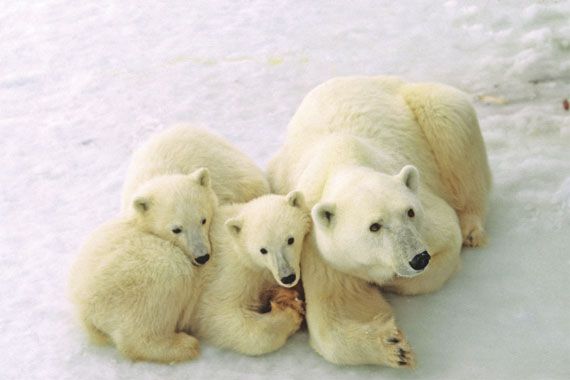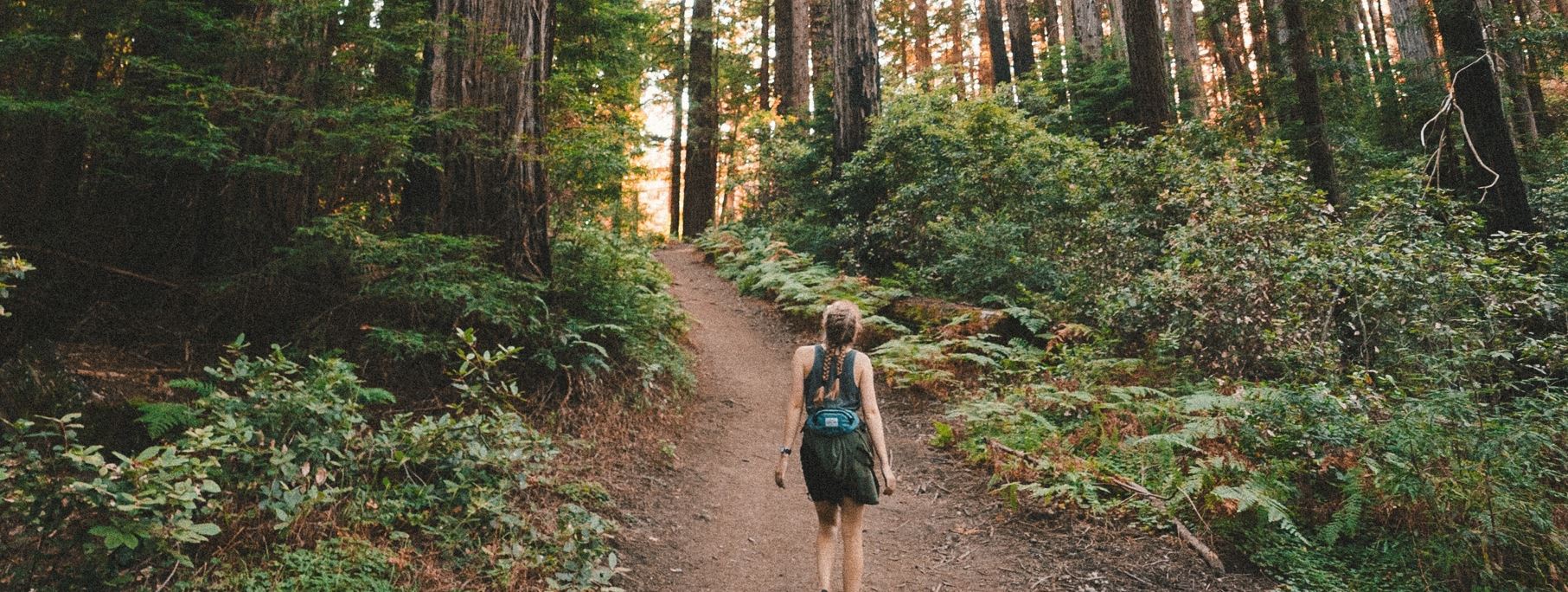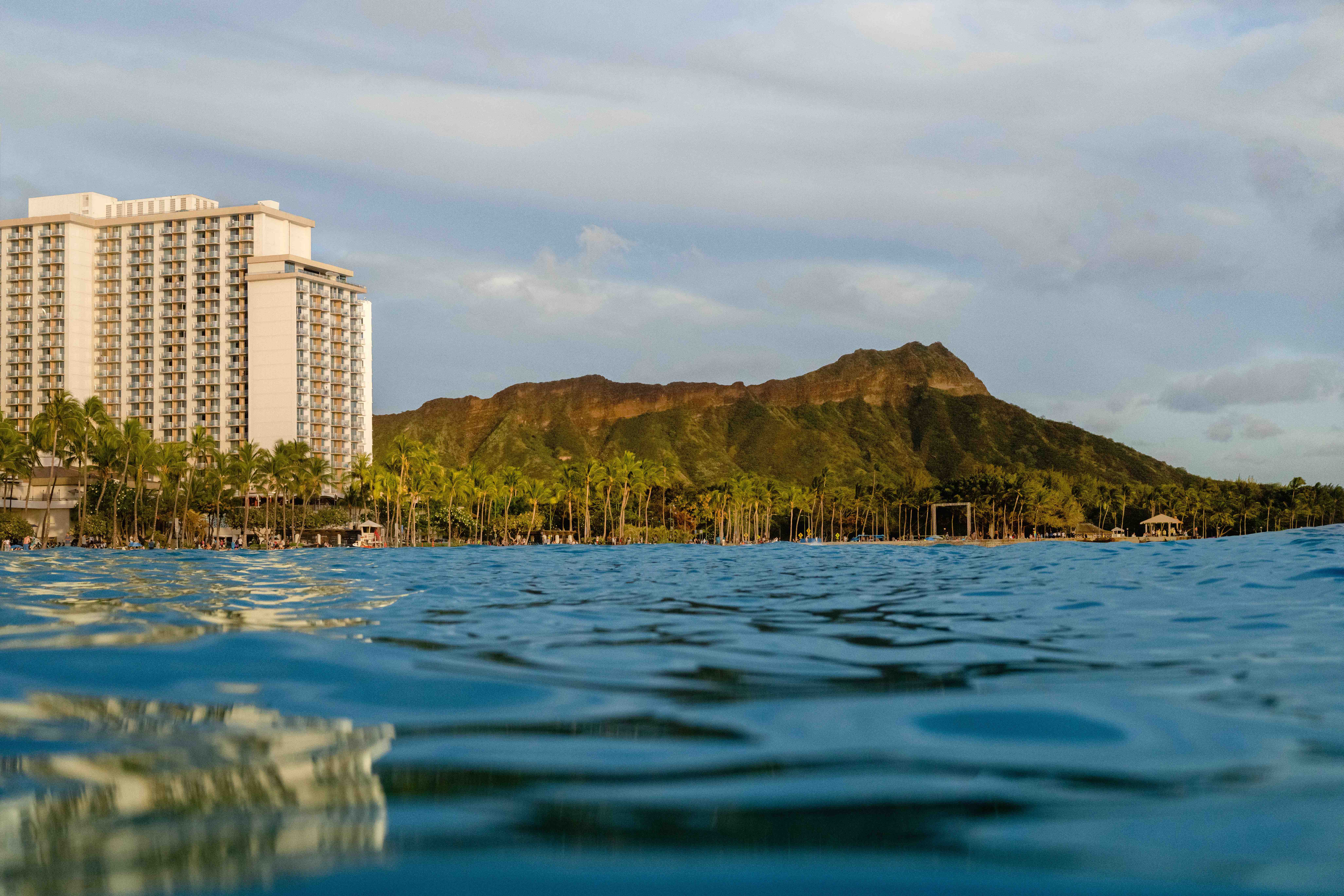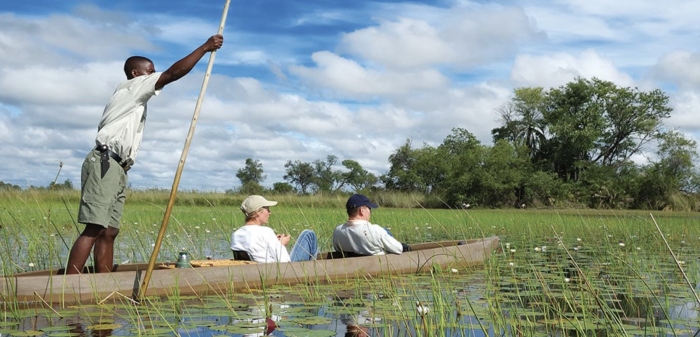
I’m on my way to join Churchill Nature Tour’s “Polar Bear Adventure.” Of course, they’ll take good care of me, but am I really ready to encounter blood-thirsty beasts? I hop off the plane into the frigid air, wondering if I’ll even need my return ticket.
POLAR BEAR LORE-FICTION VERSUS FACT
Before climbing aboard a polar rover and heading into the tundra, our group tours Churchill’s fascinating “Eskimo Museum.” Dedicated to advancing knowledge of Northern culture, with a focus on the Canadian Inuit, the beautiful exhibits include stone, bone, and ivory sculptures, as well as archaeological and wildlife specimens. A black fanged 12-foot long polar bear is the most incredible specimen, standing guard at the Museum inside a glass box.
The gift shop offers Inuit art, jewelry, and scholarly, historic and children’s books. I bought a charming child’s book titled “The Polar Bear Son,” by Lydia Dabcovich about an Inuit woman raising an orphaned polar bear cub. Village children play with friendly, fluffy “Kunikdjuaq,” who grows up beloved by all.

This helpful bear even hunts and fishes for his human mother. When the adult villagers decide the grown bear is too dangerous and must be killed, his alarmed mother sends him away. Days later, she calls his name, and the bear returns, bringing salmon and seal. Kunikdjuaq and his human mom live happily ever after. A romantic notion, of course.
That evening local photographer and guide Mike Macri shares his dramatic human vs. bear story. “One day I’m walking along Hudson Bay’s shoreline,” Mike says. “A huge polar bear rises up from a rock behind me. I grab my gun and turn to face him. Six feet from my face, I’m terrified, yet thrilled. I’m prepared to shoot him if I have to. I don’t want to. After what feels like forever, he snorts in my face, then lumbers away. What a relief. Then I check my gun: it was jammed. That bear easily could have killed me with one paw swipe. Why didn’t he? I’ll never know.”
Are we ready for our own polar bear encounters?
BEARS OUT MY WINDOW
The next morning, 25 degree temperatures insist that I layer on long underwear, wool pants, sweaters, fleece vest, snow parka, hat, and gloves. Our group climbs aboard a polar rover emblazoned with “Great White Bear Tours.” Our Churchill Nature Tour guide Patrick Rousseau gives us safety tips on meeting the “Lords of the Arctic.”
“Polar bears are super aggressive,” Patrick warns. “Males can weigh 1,320 pounds and stand 10 feet tall. If you want to return home with your hands and head, I suggest you keep them inside the bus windows.” We laugh, but he’s serious. No one has ever been hurt, and Patrick’s diligence and experience are why.

Patrick has led Churchill Nature Tours for 16 years and his impressive resume includes 34 years as a Wildlife Biologist for the Canadian National Park Service. His specialties include resource management of black bears, beaver, bison, hydrology, and Arctic Ecology. He also has a gentle sense of humor and eagle eyes, constantly scanning the horizon for bears, foxes, and owls.
Driver Bill McPherson fires up the engine and the heat, and we hunker into plush seats. How many polar bears will we see today?
The boreal forest of black spruce, jack pine, and poplar trees gives way to windswept trees, and brownish willows against a gun metal sky. Along unmarked tundra trails, we roller coaster in and out of muddy potholes, through icy ponds.
Every snow covered rock seems to be a sleeping polar bear. Huge bear paw prints meander into the distance. Thank God we’re not hiking this desolate tundra world.
“Bears at 11am,” Patrick calls out. “Two young males, sparring.” Cameras click as twenty feet from our polar rover, two yellowish polar bears stand on their hind legs, swatting each others shoulders and heads. Tough boxers.
“Are they fighting?” I ask.
 “They’re exercising,” he replies, “getting in shape for a long winter of hunting seals on the ice. If they don’t build up their stamina, they can’t hunt, and they’d starve to death. This behavior is critical for their survival.”
“They’re exercising,” he replies, “getting in shape for a long winter of hunting seals on the ice. If they don’t build up their stamina, they can’t hunt, and they’d starve to death. This behavior is critical for their survival.”
Patrick shares more polar bear facts.
“Their paws are the size of a dinner plate and their heads are 14”-16” wide. They can unhinge their powerful teeth.
and crack a seal’s scull with one crunch. Their claws can haul a 200lb. seal from the water. And they can pick up a scent from 20 miles away. That’s why they come so close, smelling our lunch. And us.”
A mother bear appears, adorable cubs in tow. She stops and sniffs the air as a strange male bear walks along the horizon. As he approaches her family, she freezes, staring intently as if to say, “Stay far from my kids or you’ll be forever sorry.” He veers away, without challenging her.
Safely inside our polar rover, we make incredible photos from the open windows and the back deck. Polar bears stand under the grate, smelling our feet.
“Don’t stick your hands through the grate,” warns Patrick, “if you enjoy having ten fingers.”
During two exhilarating days, we’re guests at a very special polar bear party. Over three dozen bears make an appearance. Some jaw each others teeth, others snooze in the willows. One looks like a giant stuffed toy, on his back, huge paws in the air.
My first polar bear sighting was at age eight. A large male paced inside a tiny concrete cubicle at The Washington National Zoo. I felt sorry that his life was limited to floating in a tiny pool, eating, sleeping, and entertaining us kids. Now I understand he was a rescued orphan cub, and his life at the Zoo was infinitely better than being defenseless, starving in the wild.
So here I am in Churchill, 50 years later, thrilled that a massive hungry polar bear is right outside my window. I can’t hug him, or pet his ivory fur. Yet I can’t give up my girlish infatuation either. I stick my vulnerable head out the bus window and blurt: “I love you. With all my heart.”

But this ferocious Lord of the Arctic is hungry. Sniffing my warm flesh, his expression says, “I could care less. Why don’t you give me your head? For a snack.”
Rejected, I sulk into my bus seat, as Patrick saunters down the aisle.
“So Sharon, now you’ve got a hot date with a polar bear?” he grins.
“Nah. Not my type.”
We laugh.
“Sharon, you know what’s so great about this place?” our driver Bill says, “Every fall in Churchill we get to watch these incredible bears get ready for winter. In December, when Hudson Bay ices over, we watch their bums waddling north onto the ice. With a big bear smile on the other end.”
 Now that’s my idea of a happy ending.
Now that’s my idea of a happy ending.
IF YOU GO
Churchill Nature Tours offers their “Polar Bear Adventure” in Churchill Manitoba Canada every fall. The guided tour includes airfare, meals, accommodations, two days in a tundra vehicle, a helicopter tour, dog sledding, Eskimo Museum, and shopping for art/souvenirs. Summer tours feature kayaking/snorkeling with beluga whales and tundra hikes. Contact: www.churchillnaturetours.com. Phone: 1-877-636-2968. More Info: EverythingChurchill.com. Travel Manitoba, TravelManitoba.com 1-800-665-0040.














